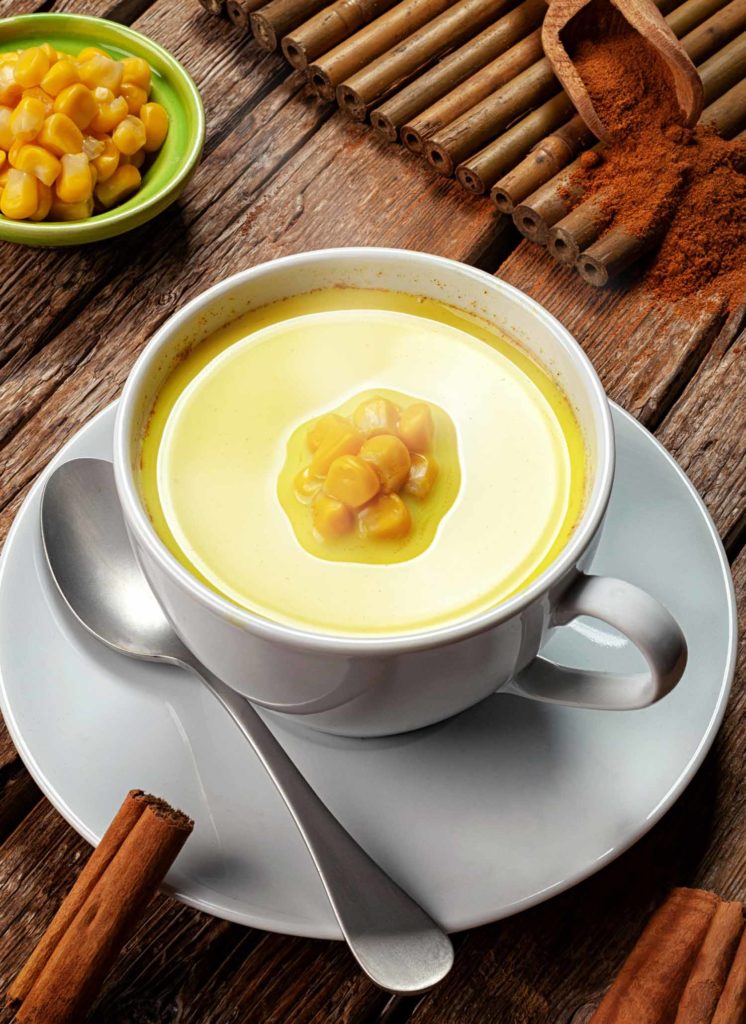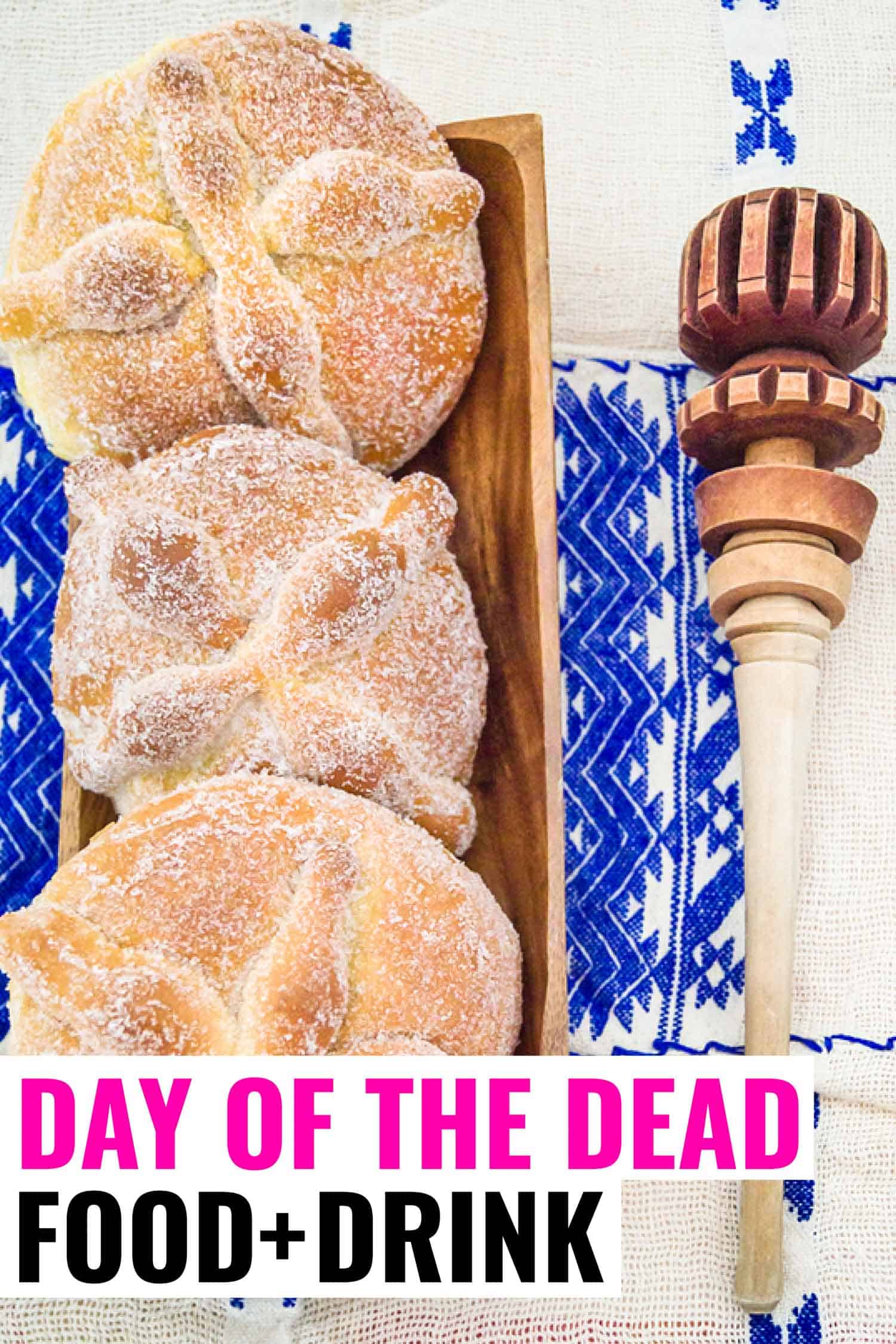The Day of the Dead is November 2. It is also known as Dia de los Muertos, is most commonly associated with Mexico where the final day is a national holiday.
But it’s also celebrated in many areas of Central and South America. Day of the Dead food traditions vary from country to country.
I remember the food from my first Day of the Dead in Cuenca, Ecuador.
It was also the first time I has colada morada, a traditional Ecuadorian drink with black corn flour and fruit.
Andres told me I had to drink this and eat guaguas de pan – an indigenous tradition of eating bread that for some reason look like small children.
There are so many different food and drink options throughout Latin America but I wanted to share some of my favourite.
Day of the Dead Food Traditions
The Role of Bread During Day of the Dead
As in many other cultures, bread is likely the most significant Day of the Dead food.
Many homes and bakeries in Mexico spend days preparing loaves and sweet breads made with marzipan as well as a special bread known as Pan de Muerto or dead bread.
There are several different varieties of Pan de Muerto. One of the most common Mexican varieties is a round sweet bread that is flavoured with orange blossom water and sprinkled with sugar.
This bread is often decorated with narrow sticks of dough on top. This gives the appearance of bones once the bread has been baked.
It’s not surprising that each country in Latin America has some form of bread to celebrate Dia de los Muertos.
In Spain it’s traditional to use bread as an offering for the souls of the dead. This tradition was brought to the New World in the Spanish colonization.

Foods Used on the Altar
Day of the Dead is all about cherishing loved ones who have moved on.
Some cities like Cuenca, with its strong Catholic influence have a somber gathering in the cemetery.
However, in Otavalo, with its strong indigenous community, there is more of a party to celebrate loved ones complete with drinking and dancing in the cemetery.
Day of the Dead food and drink placed on the altar includes tamales (Mexico and Central America), sweets and candies and even alcoholic spirits.
Many families will also place favorite foods or meals of their ancestors on the altars, as a specific welcome to family members.
Celebrations are around an altar in a cemetery or mausoleum to welcome the spirits of the dead back to the world for one night of the year.
This likely started with the Aztecs who celebrated the lives of relatives who had passed away, rather than mourning their loss.
It wasn’t until Catholics arrived that Day of the Dead starting being called All Saints Day. Like many indigenous holidays Day of the Dead was originally celebrated in July.
But with the Catholic influence the pagan holiday was gradually moved to align with All Saints Day.
Decorated Candied Skulls – Calavera
The Day of the Dead skulls are a Mexican tradition. You won’t find these skulls elsewhere in Latin America.
Although you will find real skulls in La Paz Bolivia to celebrate Dia de los ñatitas.
In Mexico these skulls made primarily out of sugar are an offering to the dead or to the living.
While you can also find them in chocolate, many of them are simply decoration.
It’s common to see marigolds surrounding them as the flower is believed to invite spirits back to the living world.
Cooking Mole From Scratch
Oaxaca, Mexico is a UNESCO World Heritage site for food and it’s known for its 7 different types of mole.
A complex sauce that takes days to make, mole negro is commonly made before Day of the Dead as many people today do not have time to prepare it other times of the year and often buy it from vendors.
Sweetened Pumpkin
While Halloween and Day of the Day are completely different holidays, pumpkins are often found in both celebrations.
However, those celebrating the Day of the Dead are more likely to eat the pumpkin rather than carve one.
In most cases the pumpkin is chopped into chunks before being slow cooked with brown sugar, orange zest and cinnamon or as an empanada.

Hot Chocolate and Other Traditional Beverages
Hot chocolate is common during Day of the Dead festivities. Chocolate has been valued by many ancients civilizations including the Mayan and Aztec.
In South and Central America it is thicker and less sweet than what we know.
Other drinks that are also common during the festival are spirits including mezcal, tequila and aguardiente in South America.
Atole, a thick and warm drink made with masa, is common along with its chocolate flavour known as champurrado.
(c) Ray Bouknight, Allison Giguere
Pin it For Later: Food to Eat During Day of the Dead


Celebrating the Day of the dead is a very positive way of looking at death and remembering the lives of the loved ones who are no longer with us anymore. No one knows for sure, but death might just be a gateway to reach some other higher dimension or even travel through the cosmos.
Interesting- I did not know the role that bread plays in this tradition!
It’s interesting to know how other cultures celebrate the Day of the Dead. In our culture we also practice offering food to the dead before praying for them.